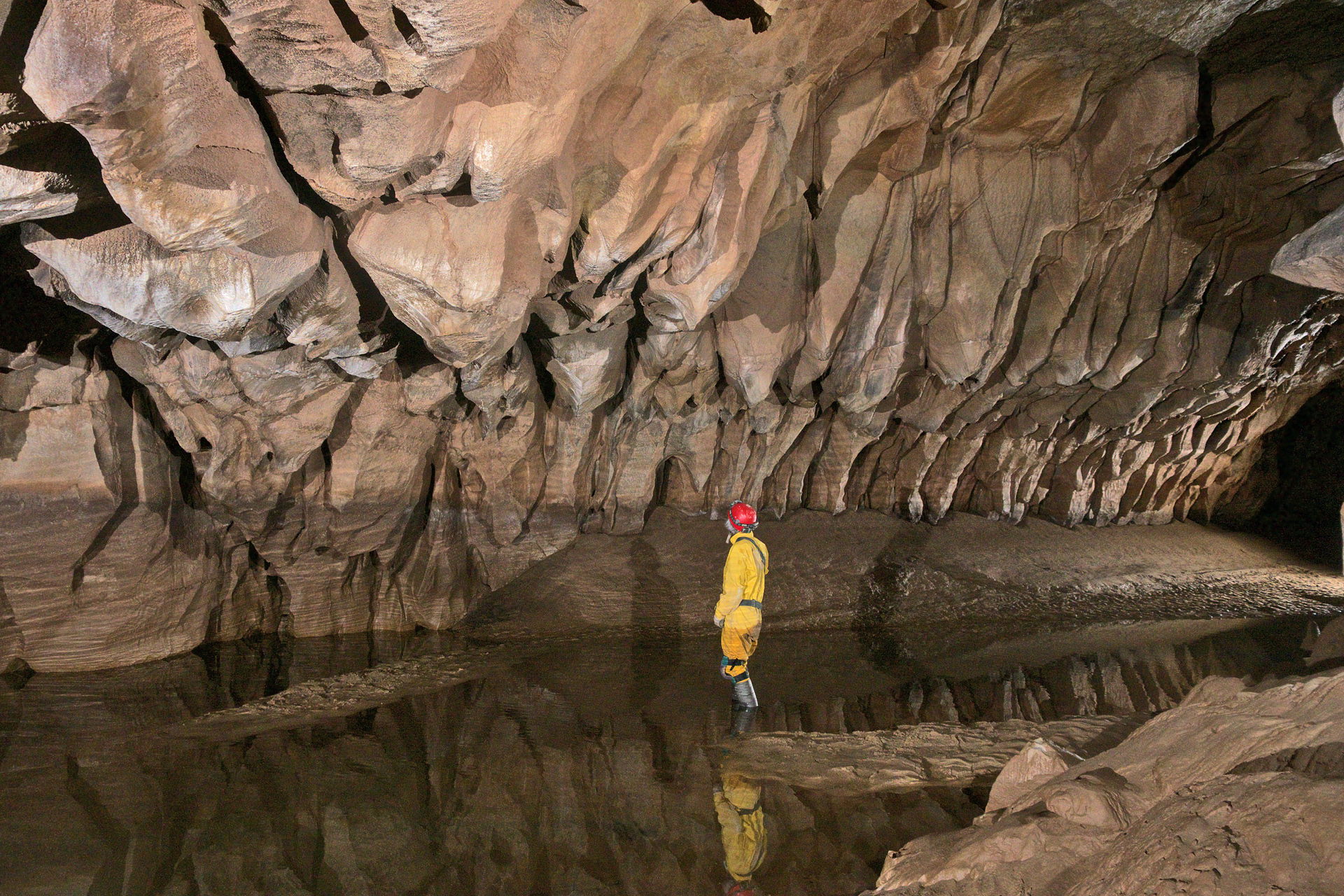Speleogen on:
[Wikipedia]
[Google]
[Amazon]
 A speleogen is a geological feature within a
A speleogen is a geological feature within a
The Virtual Cave: Speleogens
Cave geology {{cave-stub
 A speleogen is a geological feature within a
A speleogen is a geological feature within a karst
Karst () is a topography formed from the dissolution of soluble carbonate rocks such as limestone and Dolomite (rock), dolomite. It is characterized by features like poljes above and drainage systems with sinkholes and caves underground. Ther ...
system that is created by the dissolution of bedrock. As rain water falls through the atmosphere it picks up carbon dioxide and more as it passes through organic material in the soil. As water moves through joints and cracks in calcium carbonate bedrock, more dissolution of the bedrock occurs and the bedrock features that are left are the speleogens. This process called speleogenesis is what leads to secondary formations or speleothem
A speleothem (; ) is a geological formation made by mineral deposits that accumulate over time in natural caves. Speleothems most commonly form in calcareous caves due to carbonate dissolution reactions. They can take a variety of forms, depen ...
s.
The United States Code
The United States Code (formally The Code of Laws of the United States of America) is the official Codification (law), codification of the general and permanent Law of the United States#Federal law, federal statutes of the United States. It ...
defines speleogens as "relief features on the walls, ceiling, and floor of any cave or lava tube which are part of the surrounding bedrock, including anastomoses, scallops
Scallop () is a common name that encompasses various species of marine bivalve molluscs in the taxonomic family Pectinidae, the scallops. However, the common name "scallop" is also sometimes applied to species in other closely related famili ...
, meander niches, petromorphs and rock pendants in solution caves and similar features unique to volcanic caves."
"Speleogens are irregular or distinctive shapes of carbonate rock etched from bedrock by dripping or running water. Speleogens can form where bedrock is not uniform in chemical composition. Consequently, the less soluble rock dissolves slower than adjacent more soluble rock through time. The less soluble rock tends to stand in relief and projects from walls and ceilings of caves." References
External links
The Virtual Cave: Speleogens
Cave geology {{cave-stub